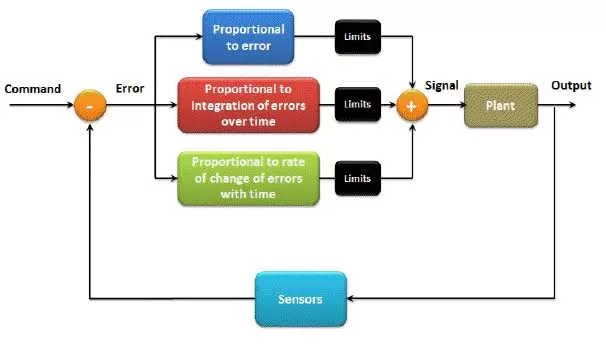
PID control is a crucial technique in industrial automation that adjusts inputs based on sensor feedback to optimize performance in automation systems.
PID Controller Fundamentals:
A PID controller consists of three components: proportional, integral and derivative. These components adjust the controller’s output based on different aspects of the error between the setpoint and the process variable.
Proportional Control:
In proportional control, the controller’s output is directly proportional to the error. A proportional gain (Kp) adjusts the output, but too high or too low values can lead to instability or inadequate response.
Integral Control:
Integral control adjusts the controller’s output based on the accumulated error over time. An integral gain (Ki) determines the output, with excessively high or low values resulting in sluggish response or steady-state error.
Derivative Control:
Derivative control adjusts the controller’s output based on the rate of change of the error. A derivative gain (Kd) affects the output and extreme values can introduce sensitivity to noise or slow response.
PID Controller Tuning Methods:
Several methods exist for tuning a PID controller, including Ziegler-Nichols, Cohen-Coon and trial and error. This discussion focuses on the trial and error method, which is simple for beginners.
Trial and Error Method:
The trial-and-error method involves iterative adjustment of Kp, Ki, and Kd gains to meet desired criteria. The basic steps are as follows:
1. Set gains to zero initially.
2. Increase Kp until oscillation occurs.
3. Decrease Kp to reduce oscillation amplitude.
4. Increase Ki until steady-state error is eliminated.
5. Increase Kd for quick response without overshoot.
Additional Considerations:
It is essential to record tuning parameters and adjust them as needed based on process changes. Testing the system under different conditions is vital to ensure stability and robustness.
PID controller tuning is a crucial skill in industrial automation. The trial and error method, with its basic steps and additional considerations, provides a simple yet effective approach for beginners to achieve optimal tuning.

Controllers and Indicators

Allen‑Bradley PLC Systems
Automation























